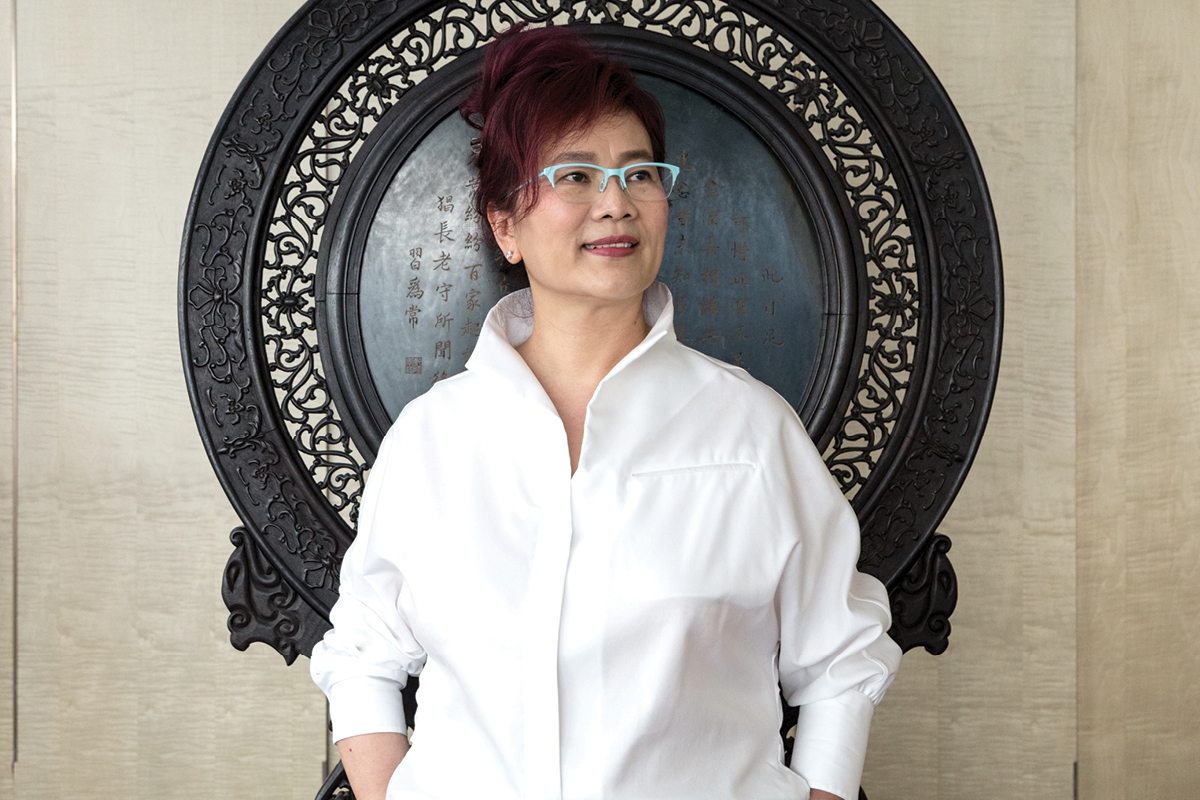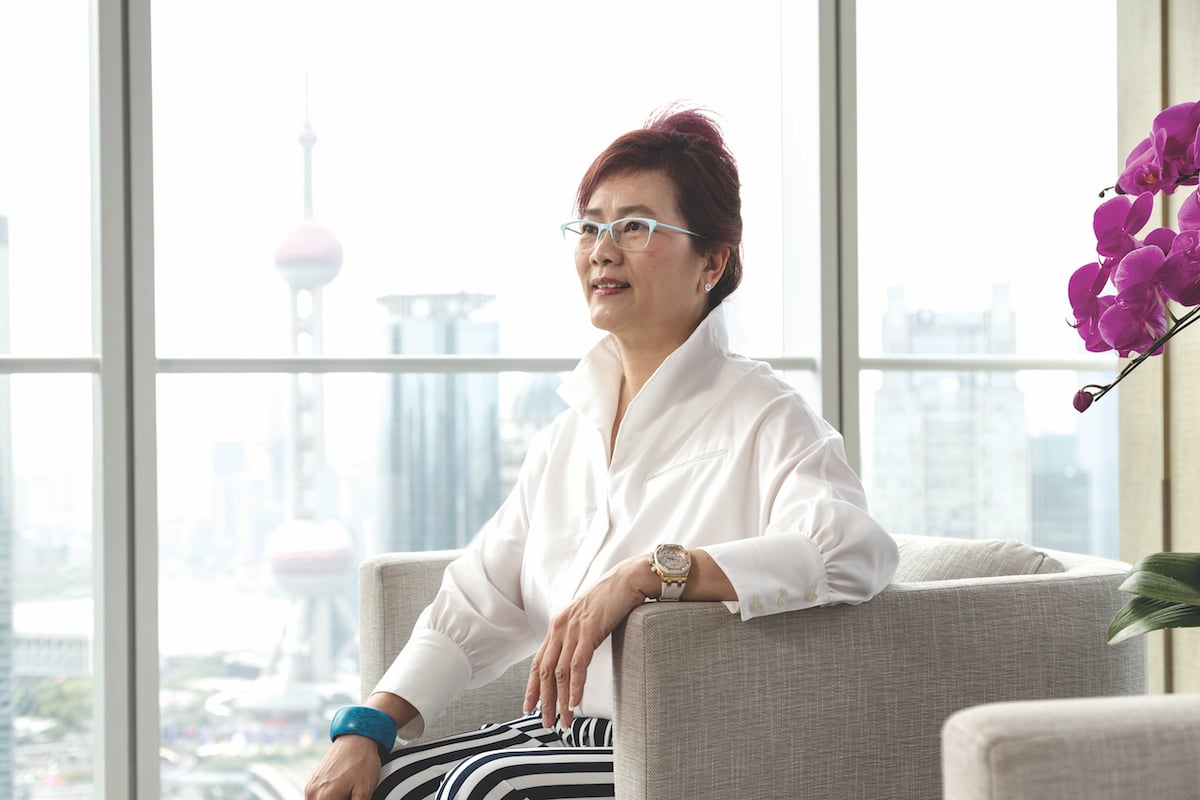Using her noodle: Daisy Poon
Fundamental to expansion is strong SOP and a robust distribution network, says Ajisen ramen China CEO Daisy Poon.
Daisy Poon had built a career on trading Asian ingredients to Europe and the US when she first became involved with Japanese company Ajisen Ramen. Back then, her business involved purchasing foodstuffs in China, processing them in Shenzhen, and then transporting them to Hong Kong for export.

At that time, she recalls, competition in the trading market was becoming too high and, after a dozen years in that industry, she was looking for a new venture to explore. Entrepreneurial from a young age, Daisy has always been on the lookout for a fresh business opportunity.
Over the course of a fateful lunch, she immediately saw the potential in bringing this specific Japanese ramen to the Chinese market. In 1994, Daisy discovered Ajisen Ramen noodles in Kumamoto, Japan, at a time when there was no ramen in her home country.
Daisy is familiar with homemade pork bone soup and noodles from her family roots, with her father from the southern part of China and her mother from the north. "Most Japanese ramen broths are miso or soy sauce soups," she explains.
"The reason I was attracted to Ajisen is because they use pork bone soup as a broth, which I am familiar with. In China, customers prefer meat bone soup, which is considered healthy and valuable."
Growing up in the city of Taiyuan, Shanxi – famous for its pork bone white soup – Daisy certainly knows what she is talking about when it comes to the value of specific ingredients.
Indeed, her first taste of Ajisen Ramen reminded her of childhood times with her parents, leading her to describe it as "the taste of home". However, it is one thing to experience nostalgic feelings from a meal.
It’s quite another to take those feelings and establish a whole new business. She approached the Japanese company with a proposition, having visited their factories to see how they did things and coming away impressed with the size and scope of what they produced.
At the time, Ajisen Ramen was well established in Japan and their processes had been honed since 1968. It took less than a year of negotiations for Daisy to get permission to use the Ajisen brand in China, Hong Kong and Macau. Then, it was time to get to work.

Setting up shop
Once she had secured the licence, Daisy’s first step was to get her foundational operations set up correctly for the future. And for that, she had a secret weapon.
Remember Daisy’s ingredients-trading operation? She was able to leverage her experience processing food, as well as her access to cheap labour and raw materials, to hit the ground running.
She made the back end of the business a priority, ensuring it was running to specifications before opening a public-facing shopfront. "I opened the first Ajisen store in Hong Kong in 1996, where I was preparing a central kitchen to support the store operation."
"I attract good talent by sharing the same values with them and we attract new customers by constantly innovating."
In the early days, the parent company was on hand to assist with making sure everything was aligned in terms of production and flavours. "Ajisen Japan has provided some support to my business," Daisy says.
"For example, they will introduce their technique to our products, and they will also do quality checks for our Chinese stores. But they don’t control our new products – they grant us the full right to develop new products for the Chinese market."
In addition to the Japanese-style dishes served in official outlets, the company also manufactures and sells packaged noodles and similar products, geared towards the Chinese palate.
"As an example of the differences," Daisy explains, "we use the same technique as Ajisen Japan to produce the main ingredients, but change the salinity of the ramen soup to cater to Chinese tastes."
Growth assets
From that one Hong Kong store, Daisy expanded to Shenzhen and deeper into mainland China. Since then, the company has grown dramatically. Today, throughout the People’s Republic, Ajisen China has 775 outlets, two research and development centres, four factories and about 10,000 employees.
There are six central kitchens located in different parts of China, supporting an all-day demand for their products. Ajisen also expanded into international airports, including in Rome and Helsinki, to bring the Asian ramen business to the globe.
Standardisation is the key to ensuring success in this field, and Daisy speaks very highly of her suppliers as well as her staff. "I think the key to success in running a company is to stick to your goals and always be innovating," Daisy says.
"I attract good talent by sharing the same values with them and we attract new customers by constantly innovating. We will develop new products every six months and renovate the stores to attract young people."
"I always eat them at home to try the taste and quality."
All that said, she is adamant there’s one core reason people return to Ajisen China – the same thing that drew her to the company in the first place: "The reason customers keep coming back is that pork bone broth. This is the main value proposition that makes us stand out from other ramen brands in China."
Speaking of China, you may be aware that it is a very large country, with a population that’s growing in both wealth and desire for delicious meals.
In fact, the nation contains more than 600 cities, which means there are still plenty of expansion prospects for a player with strong infrastructure, distribution and – perhaps most importantly when it comes to food – a robust standard operating procedure.
"I put no limit on how many outlets I would like to open," Daisy says. "China is a huge market and we will find more opportunities within it." One final question: does Daisy eat Ajisen Ramen noodles at home? "Yes, I do. I always eat them at home to try the taste and quality."
Proudly supported by: